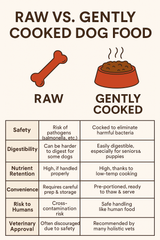As the flowers bloom and the weather warms, spring brings a sense of rejuvenation and joy for many. However, for our furry companions, this season can also bring about a host of allergies and discomforts. In this blog post, we'll explore the common springtime allergies in dogs, their symptoms, and practical tips for managing your pet's seasonal woes.
Understanding Spring Allergies in Dogs:
Just like humans, dogs can suffer from allergies triggered by environmental factors such as pollen, grass, mold, and dust. Springtime allergies, also known as seasonal allergies or allergic rhinitis, occur when a dog's immune system overreacts to these allergens, leading to a range of symptoms.
Symptoms of Spring Allergies:
1. Itchy skin, leading to excessive scratching, licking, and chewing.
2. Red, inflamed skin or hot spots.
3. Watery eyes or eye discharge.
4. Sneezing and nasal discharge.
5. Ear infections or ear scratching.
6. Respiratory issues such as coughing or wheezing.
7. Digestive upset, including vomiting or diarrhea.
Managing Spring Allergies in Dogs:
1. Consult Your Veterinarian: If you suspect that your dog is suffering from spring allergies, it's essential to seek guidance from your veterinarian. They can help diagnose the allergy and recommend an appropriate treatment plan.
2. Allergy Testing: Your vet may recommend allergy testing to identify specific allergens triggering your dog's symptoms. This information can help tailor a targeted treatment approach.
3. Medications: Your vet may prescribe medications such as antihistamines, corticosteroids, or allergy shots to alleviate your dog's symptoms and manage their allergic reactions.
4. Environmental Management: Minimize your dog's exposure to allergens by keeping them indoors during peak pollen times, wiping their paws after outdoor walks, and regularly bathing them to remove allergens from their coat.
5. Dietary Considerations: In some cases, dietary changes or supplements may help support your dog's immune system and reduce allergy symptoms. Consult your vet for recommendations.
6. Nutritious Diet: Providing a balanced and nutritious diet can help support your dog's overall health and immune function, which may aid in managing allergy symptoms.
7. Regular Grooming: Regular grooming, including brushing your dog's coat and cleaning their ears, can help remove allergens and prevent skin irritation.
Conclusion:
Springtime allergies can be a source of discomfort for our beloved canine companions, but with proper management and care, we can help alleviate their symptoms and improve their quality of life. By understanding the signs of spring allergies, seeking veterinary guidance, and implementing practical strategies for management, we can ensure that our dogs enjoy a happy and healthy spring season.
Understanding Spring Allergies in Dogs:
Just like humans, dogs can suffer from allergies triggered by environmental factors such as pollen, grass, mold, and dust. Springtime allergies, also known as seasonal allergies or allergic rhinitis, occur when a dog's immune system overreacts to these allergens, leading to a range of symptoms.
Symptoms of Spring Allergies:
1. Itchy skin, leading to excessive scratching, licking, and chewing.
2. Red, inflamed skin or hot spots.
3. Watery eyes or eye discharge.
4. Sneezing and nasal discharge.
5. Ear infections or ear scratching.
6. Respiratory issues such as coughing or wheezing.
7. Digestive upset, including vomiting or diarrhea.
Managing Spring Allergies in Dogs:
1. Consult Your Veterinarian: If you suspect that your dog is suffering from spring allergies, it's essential to seek guidance from your veterinarian. They can help diagnose the allergy and recommend an appropriate treatment plan.
2. Allergy Testing: Your vet may recommend allergy testing to identify specific allergens triggering your dog's symptoms. This information can help tailor a targeted treatment approach.
3. Medications: Your vet may prescribe medications such as antihistamines, corticosteroids, or allergy shots to alleviate your dog's symptoms and manage their allergic reactions.
4. Environmental Management: Minimize your dog's exposure to allergens by keeping them indoors during peak pollen times, wiping their paws after outdoor walks, and regularly bathing them to remove allergens from their coat.
5. Dietary Considerations: In some cases, dietary changes or supplements may help support your dog's immune system and reduce allergy symptoms. Consult your vet for recommendations.
6. Nutritious Diet: Providing a balanced and nutritious diet can help support your dog's overall health and immune function, which may aid in managing allergy symptoms.
7. Regular Grooming: Regular grooming, including brushing your dog's coat and cleaning their ears, can help remove allergens and prevent skin irritation.
Conclusion:
Springtime allergies can be a source of discomfort for our beloved canine companions, but with proper management and care, we can help alleviate their symptoms and improve their quality of life. By understanding the signs of spring allergies, seeking veterinary guidance, and implementing practical strategies for management, we can ensure that our dogs enjoy a happy and healthy spring season.




